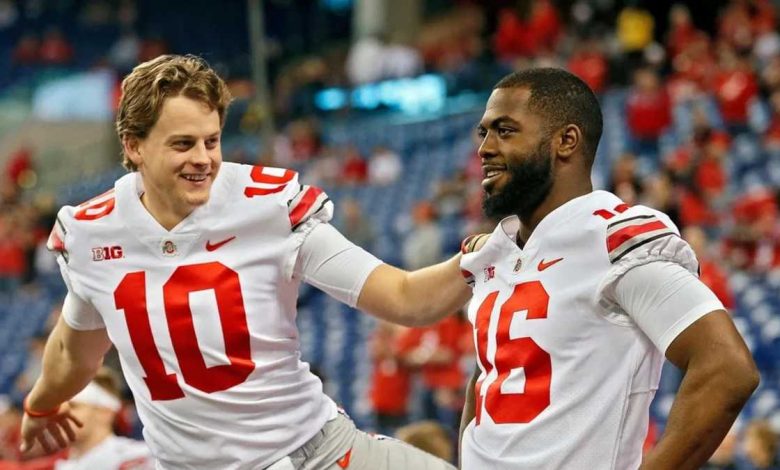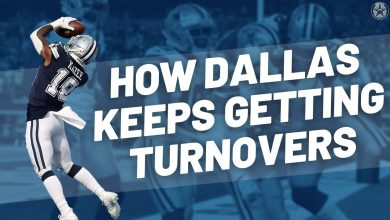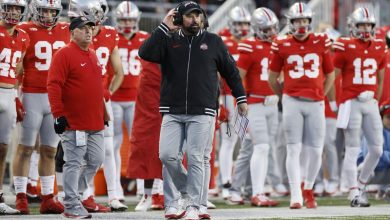Joe Burrow admits his time at Ohio State may have looked very different in today’s era of college football

Joe Burrow, the quarterback who became a national phenomenon with the LSU Tigers, has experienced a football journey that is both unique and inspiring. Burrow’s rise to prominence, culminating in a Heisman Trophy win and a national championship, is well-documented, but less discussed is his time at Ohio State. Reflecting on his college career, Burrow recently admitted that, in today’s era of college football, his time at Ohio State may have looked very different.
Burrow’s career trajectory highlights how the game of college football has evolved in terms of player development, the transfer portal, and opportunities for athletes to succeed in ways that were not possible just a few years ago. As a star quarterback at LSU, Burrow is now a key figure in the NFL, playing for the Cincinnati Bengals and showing flashes of greatness. However, his time at Ohio State, where he began his college career, was filled with challenges and obstacles that he had to overcome in a system that wasn’t always conducive to his development.
Burrow’s candid reflections on his journey bring to light how much college football has changed, and they offer a glimpse into what could have been if the current landscape had been in place during his time at Ohio State. With new dynamics, opportunities, and challenges in today’s game, Burrow’s story is one that illustrates both the struggles and triumphs that come with adapting to a rapidly changing college football environment.
The Ohio State Experience: A Struggle for Burrow’s Playing Time
Joe Burrow arrived at Ohio State in 2015 as a highly regarded recruit. Coming out of Athens, Ohio, Burrow was a four-star quarterback with immense potential. He initially joined the Buckeyes’ program with hopes of earning the starting job and leading Ohio State to new heights. However, things did not go according to plan for Burrow early in his career.
At the time, Ohio State was one of the most dominant programs in college football, led by head coach Urban Meyer. The Buckeyes boasted a loaded roster filled with top-tier talent, and quarterback play was no exception. J.T. Barrett, a dual-threat quarterback, was entrenched as the starter, and Braxton Miller, a dynamic playmaker, was recovering from injury and shifting to wide receiver. With Barrett firmly at the helm, Burrow faced stiff competition for playing time in an offense that was tailored to Barrett’s strengths.
Despite showing promise in practice and being a talented quarterback, Burrow found himself stuck behind the veterans, with limited opportunities to showcase his abilities. Although Burrow had moments where he looked capable of taking the starting role, he never received the chance to fully prove himself in meaningful games. Instead, he spent the majority of his time on the bench, watching Barrett lead the offense.
This situation could have been incredibly frustrating for Burrow, but he remained patient and worked hard behind the scenes, hoping for his shot. However, with each passing year, the reality of limited playing time at Ohio State became clearer. Burrow, recognizing that his chances of starting at Ohio State were slim, made the bold decision to transfer to LSU after the 2017 season.
The Transfer Portal and the Changing Landscape of College Football
Burrow’s decision to leave Ohio State and transfer to LSU is a reflection of the broader changes in college football. At the time, the transfer process was more difficult and restrictive than it is now. Players could not simply enter the transfer portal, and they often had to sit out a year before becoming eligible to play for their new school. This posed a significant obstacle for Burrow, who wanted to continue his football career without having to lose a year of eligibility.
However, Burrow’s transfer turned out to be a blessing in disguise. He arrived at LSU in 2018 and quickly became the starting quarterback. Under the tutelage of head coach Ed Orgeron and offensive coordinator Steve Ensminger, Burrow began to develop into one of the best quarterbacks in college football. His talent, leadership, and football IQ flourished in LSU’s new, dynamic offense, and by his senior season, he was widely regarded as the best player in college football.
Burrow’s rise at LSU also coincided with the emergence of the transfer portal, which was officially introduced in 2018. The portal revolutionized the way players could change schools, offering them greater freedom and flexibility in their decisions. In today’s college football landscape, players like Burrow have more opportunities than ever before to find a program that fits their skills and playing style. The transfer portal allows athletes to pursue better opportunities, play more frequently, and make a greater impact on their college careers.
Had Burrow entered the transfer portal earlier in his college career, there is no doubt that he would have attracted attention from numerous programs eager to bring him in. In fact, many believe that, had Burrow been able to transfer freely and immediately, his career at Ohio State might have played out differently. Today, quarterbacks like Burrow can leave programs where they are not getting playing time and find new homes without having to sit out for a year.
The Impact of Today’s College Football System
Looking back at his time at Ohio State, Burrow has admitted that, had the current college football landscape existed during his time there, things might have gone differently. The transfer portal, NIL (Name, Image, and Likeness) rights, and the increased emphasis on player empowerment have fundamentally changed the way athletes approach their careers. These changes have created a more player-friendly environment, where athletes have the ability to pursue their goals and take control of their futures.
One of the most significant changes to the college football system is the introduction of NIL. For years, college athletes were prohibited from profiting off their name, image, or likeness, which restricted their earning potential and limited their opportunities. However, with the advent of NIL deals, players now have the ability to sign endorsement deals, monetize their social media presence, and receive compensation for their talents. This is especially important for athletes like quarterbacks, who often have high visibility and significant marketability.
Burrow’s career at LSU benefited from the new NIL landscape. As one of the most marketable athletes in college football, Burrow was able to capitalize on his success and build his personal brand during his Heisman-winning season in 2019. The financial opportunities available to athletes today are a stark contrast to the limitations Burrow faced during his time at Ohio State.
Additionally, the ability to transfer more freely has allowed athletes to take control of their college careers. If Burrow had been able to transfer to another program without sitting out a year, he could have potentially found an environment where he could develop more quickly and secure a starting position earlier in his career. The flexibility of the transfer portal means that quarterbacks and other athletes now have a greater ability to find the right fit for their skills and ambitions.
A Journey That Led to Greatness
Despite the challenges Burrow faced at Ohio State, his journey is a testament to his resilience, determination, and belief in his own abilities. He didn’t let a lack of playing time at Ohio State define his career. Instead, he used his time in Columbus to grow as a player and prepare for his next opportunity.
Burrow’s eventual success at LSU is a direct result of his hard work and commitment to improving. He embraced the opportunity to start fresh at LSU, and under the guidance of a coaching staff that believed in his potential, Burrow flourished. In just two seasons at LSU, he went from being a transfer quarterback to becoming one of the most accomplished players in college football history. His Heisman Trophy win, national championship, and incredible individual performances solidified his place as one of the best quarterbacks in the history of the college game.
Looking back, Burrow’s time at Ohio State played an important role in shaping him into the player he became. While he may have wished for more playing time and a better opportunity to showcase his skills, the experience taught him valuable lessons about perseverance, patience, and overcoming adversity. Burrow’s journey from Ohio State to LSU to the NFL is a reminder that success is often found through hard work, adaptability, and seizing the right opportunities at the right time.
Conclusion
Joe Burrow’s reflection on his time at Ohio State sheds light on the ever-changing nature of college football. The transfer portal, NIL rights, and greater opportunities for player empowerment have transformed the way athletes approach their college careers. Had these changes been in place during Burrow’s time at Ohio State, it is possible that his college football journey would have been very different.
Nevertheless, Burrow’s story is a remarkable one of resilience and determination. He didn’t let the challenges at Ohio State define his career. Instead, he took advantage of the opportunities that came his way at LSU, ultimately leading him to national prominence. Burrow’s success is a testament to the importance of finding the right fit, believing in oneself, and never giving up on the dream of becoming a great player. In the end, his journey from Ohio State to LSU to the NFL is one that will be remembered as one of the most inspiring stories in college football history.









